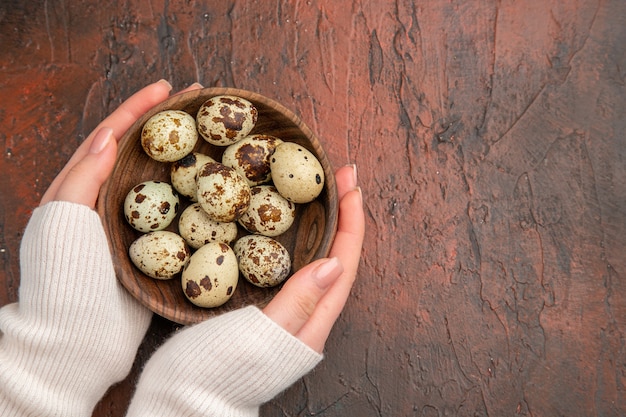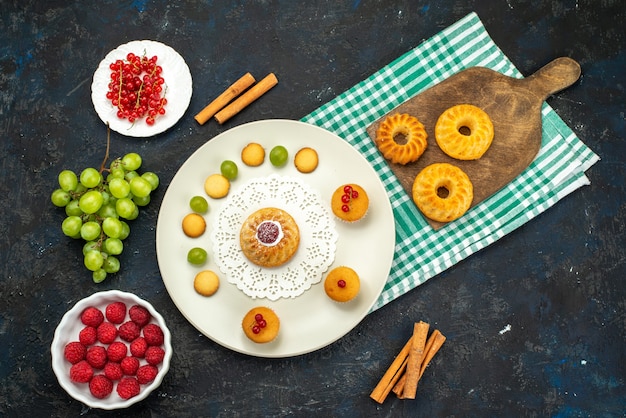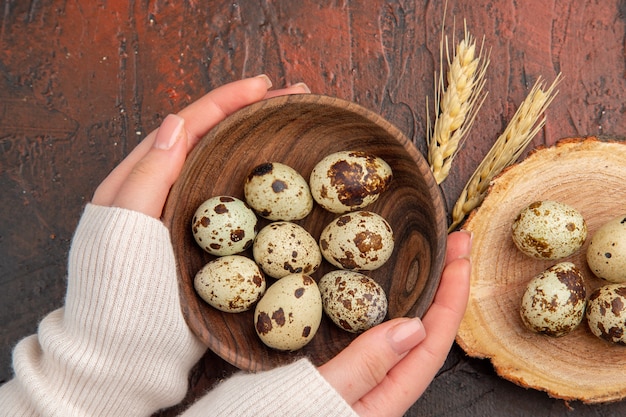Quail eggs! Those adorable little bundles of flavour have taken the culinary world by storm, and for good reason. They're bursting with deliciousness, they're super cute, and they add a touch of whimsy to any dish. But let's be honest, they can be a bit tricky to cook. We've all been there, aiming for that perfect soft-boiled yolk or a crispy fried egg, only to end up with something that's either rubbery or runny. But fear not, my friends, because I'm here to share my hard-earned wisdom and turn you into a quail egg cooking pro. I'm going to guide you through every method, from the basic to the more adventurous, so you can conquer these little gems with confidence.
(Part 1) First, let's address the elephant in the room, shall we? Quail eggs are tiny – like, seriously tiny – compared to their chicken egg counterparts. This means you need to be a bit more careful with them, and your cooking times will need a little tweaking. Don't worry, it's all about practice, and I'm here to make it as easy as possible.
Choosing the Perfect Quail Eggs

Before we even start cooking, let's talk about picking the right eggs. You want to choose the freshest eggs you can find, just like a good detective chooses the right tools for the job. fresh eggs are packed with flavour and have a better texture. Here's how to pick the best ones:
- Weight Check: Hold the egg in your hand and give it a good feel. A fresh egg will feel heavier than an older one.
- Crack Inspection: Check for any cracks or damage on the shell. We don't want any unwanted surprises in the kitchen!
- The Sniff Test: Give the eggs a little sniff. They should smell fresh and clean, not funky or sour.
Preparing Quail Eggs for Cooking

Alright, you've got your eggs, now let's prep them for the big show. The first step is a good wash. This is especially important if you're using eggs from a local farm or market, as they might have a bit of dirt or debris on them. Just a gentle wash with cold water will do the trick. Don't be too rough though, we don't want to crack those precious little shells. Once they're washed, dry them thoroughly with a clean towel or paper towels.
The Art of Soft Boiling Quail Eggs

Let's start with the classic, shall we? Soft-boiled quail eggs are a delightful little breakfast or a perfect snack. They're a great way to enjoy the delicate flavour and creamy texture of the yolk. Here's how to get that perfect soft-boiled egg:
1. The Boiling Water Method
This is the simplest and most common method. You'll need a small saucepan, cold water, and a slotted spoon. This is a great method for a quick and easy soft-boiled egg.
- Fill the saucepan with enough water to cover the eggs by about an inch.
- Bring the water to a rolling boil over medium-high heat.
- Gently drop the eggs into the boiling water. Don't overcrowd the pan.
- Reduce the heat to a simmer, and set a timer for 2-3 minutes for a runny yolk. For a firmer yolk, cook for 4-5 minutes.
- Once the timer goes off, drain the hot water and immediately immerse the eggs in a bowl of ice water. This stops the cooking process and makes them easier to peel.
- Peel the eggs under running cold water. Start at the bottom, gently tap the shell, and peel away from the bottom. Be careful not to break the yolk.
And there you have it! Soft-boiled perfection. Serve with salt, pepper, and a sprinkle of herbs or a dollop of sour cream. You're welcome.
2. The Steam Method
For a more gentle approach to cooking, try steaming your quail eggs. You'll need a steamer basket and a saucepan with a tight-fitting lid.
- Fill the saucepan with about an inch of water and bring it to a simmer.
- Place the eggs in the steamer basket and lower it into the saucepan, making sure the eggs are not touching the water.
- Cover the saucepan and steam the eggs for 2-3 minutes for a runny yolk, or 4-5 minutes for a firmer yolk.
- Remove the eggs from the steamer basket and plunge them into a bowl of ice water to stop the cooking.
- Peel and enjoy!
3. The Microwave Method
Yes, you can even cook quail eggs in the microwave! This method is super quick and easy, but it does require a little attention.
- Place a microwave-safe bowl on a plate. This helps prevent the bowl from spinning in the microwave.
- Pour about half an inch of water into the bowl.
- Gently place the eggs in the bowl. Don't crowd them.
- Microwave on high power for 30-45 seconds for a runny yolk, or 1-1.5 minutes for a firmer yolk.
- Remove the eggs from the bowl and plunge them into ice water.
- Peel and enjoy!
Just remember, microwave times can vary depending on the wattage of your microwave. It's best to start with a shorter cooking time and adjust as needed. You don't want to end up with a rubbery mess!
The Delight of Perfectly Fried Quail Eggs
Now, let's talk fried quail eggs. This is where things get a bit more exciting, and the magic really starts to happen. We're aiming for that beautiful, crispy, golden-brown crust with a runny, glistening yolk.
1. The Classic Pan Fry
This is the most common method, and it's a foolproof way to get a perfectly fried quail egg. You'll need a non-stick pan, oil, and a spatula.
- Heat a tablespoon of oil in the pan over medium-high heat.
- Gently crack the eggs into the hot oil.
- Cook for 1-2 minutes, or until the whites are set and the yolks are still runny.
- Carefully flip the eggs over and cook for another 30-60 seconds, until the yolks are cooked to your liking.
- Transfer the eggs to a plate and enjoy!
For an extra crispy crust, try using clarified butter instead of oil. It's also a good idea to keep the pan at a low to medium heat to avoid burning the eggs. We don't want any burnt offerings here!
2. The Skillet Fry
If you want to get a bit more adventurous, try frying your quail eggs in a skillet. This gives the eggs a nice, even cook. You'll need a cast iron skillet, oil, and a spatula.
- Preheat the skillet over medium-high heat.
- Add about a tablespoon of oil to the skillet.
- Crack the eggs into the hot oil, and cook for 1-2 minutes, or until the whites are set and the yolks are still runny.
- Carefully flip the eggs over and cook for another 30-60 seconds, until the yolks are cooked to your liking.
- Transfer the eggs to a plate and enjoy!
For an extra crispy crust, try adding a tablespoon of water to the skillet after the eggs are flipped. The steam will help create a crispy outer layer.
3. The Air Fryer Method
For a healthier option, try air frying your quail eggs. You'll need an air fryer, oil, and a silicone muffin tin.
- Preheat the air fryer to 350°F (175°C).
- Spray the silicone muffin tin with oil.
- Crack the eggs into the muffin tin.
- Place the muffin tin in the air fryer and cook for 3-4 minutes, or until the whites are set and the yolks are still runny.
- Remove the eggs from the air fryer and enjoy!
For an extra crispy crust, try using a high-heat oil, like avocado oil. And remember, every air fryer is different. It may take a bit of experimentation to get the perfect cooking time.
Beyond the Basics: Quail Egg Recipes to Impress
Now that you've mastered the basics, let's get creative. Quail eggs are perfect for so many different dishes, and they add a touch of elegance to any meal.
1. Quail Eggs Deviled
A classic appetizer with a twist. It's a simple dish, but it's so tasty!
- Hard-boil the quail eggs.
- Carefully peel the eggs and cut them in half lengthwise.
- Remove the yolks and place them in a bowl.
- Mash the yolks with a fork until they are smooth.
- Add mayonnaise, Dijon mustard, chopped gherkins, and salt and pepper to taste.
- Mix the yolk mixture until it is well combined.
- Spoon the yolk mixture back into the egg whites.
- Garnish with paprika and serve.
You can also add other flavours to your deviled eggs, such as chopped chives, smoked paprika, or even a bit of sriracha for a spicy kick.
2. Quail Eggs in a Nest
This is a fun and visually appealing dish that's perfect for a special occasion. It's a bit like a gourmet version of eggs in a basket, and it's sure to impress your guests.
- Cut a slice of bread into a circle.
- Remove the center of the bread circle to create a nest.
- Toast the bread.
- Place the bread nest on a plate.
- Fry a quail egg in a pan until the whites are set and the yolk is runny.
- Carefully slide the fried quail egg into the bread nest.
- Serve immediately with a drizzle of balsamic vinegar and chopped chives.
For a more indulgent version, try adding a slice of cooked ham or bacon to the nest. Or get fancy with a sprinkle of truffle salt or Parmesan cheese.
3. Quail Eggs with Asparagus
This is a simple and elegant dish that's perfect for a light lunch or dinner. It's a combination of fresh flavours and textures that will tantalize your taste buds.
- Trim the asparagus spears and steam them for 2-3 minutes, or until they are tender-crisp.
- Fry the quail eggs in a pan until the whites are set and the yolks are runny.
- Arrange the asparagus spears on a plate and top with the fried quail eggs.
- Drizzle with olive oil, lemon juice, and a sprinkle of salt and pepper.
- Serve immediately.
For a more flavourful dish, try roasting the asparagus with olive oil, garlic, and herbs before frying the eggs. Or add a sprinkle of parmesan cheese to the plate.
FAQs: Your Quail Egg Cooking Questions Answered
You've got questions, I've got answers. Let's clear up any doubts you may have.
1. How do I know if my quail eggs are cooked?
It depends on the method you're using. For soft-boiled eggs, they should feel firm to the touch, but the yolk will still be runny. For fried eggs, the whites should be set and the yolk will be runny or cooked to your liking. If you're unsure, you can cut the egg in half to check.
2. How do I peel quail eggs?
Peeling quail eggs can be a little tricky. It's best to peel them under running cold water. Start at the bottom, gently tap the shell, and peel away from the bottom. You'll want to avoid breaking the yolk. If you're having trouble, try soaking the eggs in cold water for a few minutes before peeling.
3. What can I do with leftover quail eggs?
Leftover quail eggs can be used in a variety of dishes. You can add them to salads, sandwiches, or soups. You can also use them to make a simple egg salad or deviled eggs. Or try making a delicious quail egg omelet or frittata.
4. Can I freeze quail eggs?
It's not recommended to freeze whole quail eggs. The yolk will become watery and the texture will be affected. However, you can freeze the whites or yolks separately.
5. Where can I buy quail eggs?
Quail eggs are becoming increasingly popular, so they're easier to find than ever before. You can find them at many grocery stores, farmer's markets, and specialty food stores. You can also order them online.
There you have it! Now you're ready to take your cooking skills to the next level with quail eggs. So get creative, experiment, and have fun. You won't regret it!
Everyone is watching

Corn on the Cob: The Ultimate Guide to Perfectly Cooked Ears
Healthy MealsAh, corn on the cob. Just the name evokes images of sunny days, barbecues, and that sweet, juicy flavour that ...

Perfect Pork Roast Oven Cooking Time: A Guide to Delicious Results
Healthy MealsThere's something truly satisfying about a perfectly roasted pork. The aroma alone is enough to make your mout...

Ham Cooking Time: How Long to Bake, Smoke, or Boil a Delicious Ham
Healthy MealsAh, ham. It's a classic, isn't it? A real crowd-pleaser, especially around holidays. And when done right, it'...

Scallops: The Ultimate Guide to Perfect Cooking
Healthy MealsAh, scallops. Those delicate, sweet, and utterly delicious morsels of the sea. They hold a special place in my...

Spaghetti Squash: The Ultimate Guide to Cooking and Serving
Healthy MealsRemember that time you saw spaghetti squash at the supermarket, looking all bumpy and strange, and thought, "W...
